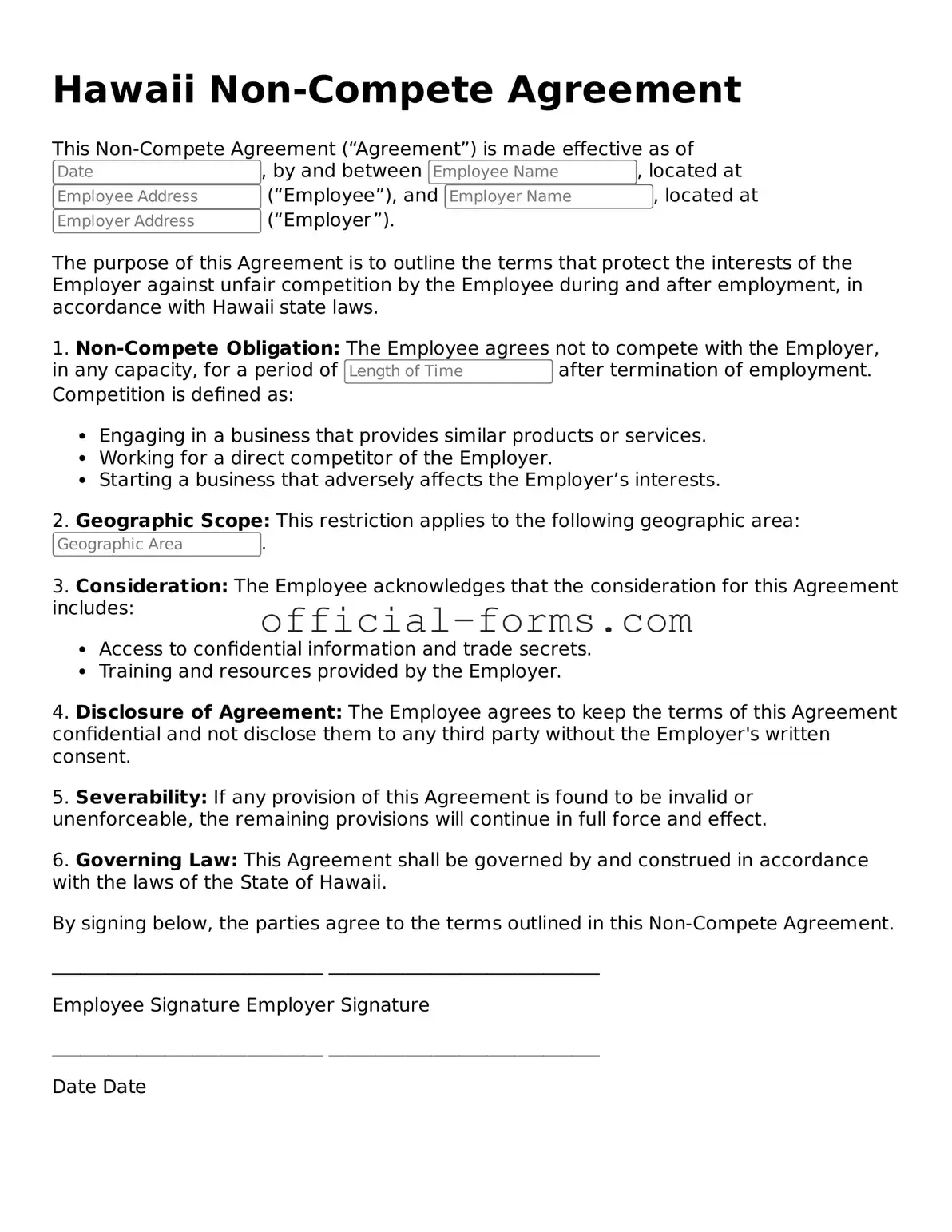In the vibrant landscape of Hawaii's employment market, the Non-compete Agreement form serves as a crucial tool for both employers and employees. This legal document is designed to protect a company's proprietary information and trade secrets while ensuring that employees do not engage in competitive practices that could harm their former employers. The form outlines specific terms, such as the duration of the non-compete period, the geographical scope within which the restrictions apply, and the types of activities that are deemed competitive. It is essential for employers to draft this agreement carefully, as overly broad or vague terms may render it unenforceable in a court of law. Employees, on the other hand, must understand their rights and obligations under such agreements, as they can significantly impact future employment opportunities. By navigating the nuances of the Non-compete Agreement form, both parties can foster a fair and transparent working relationship, ultimately contributing to a healthier business environment in the Aloha State.
